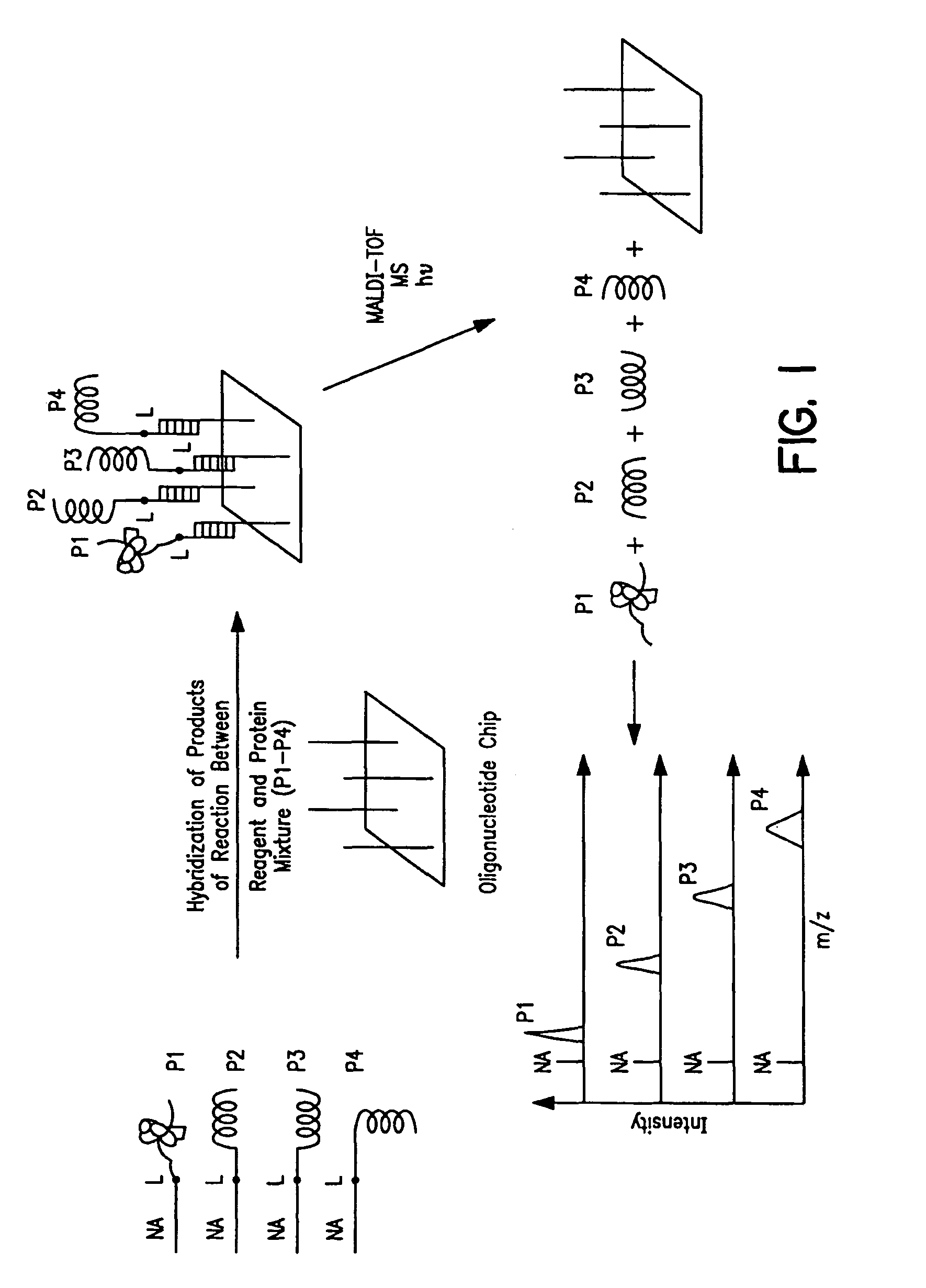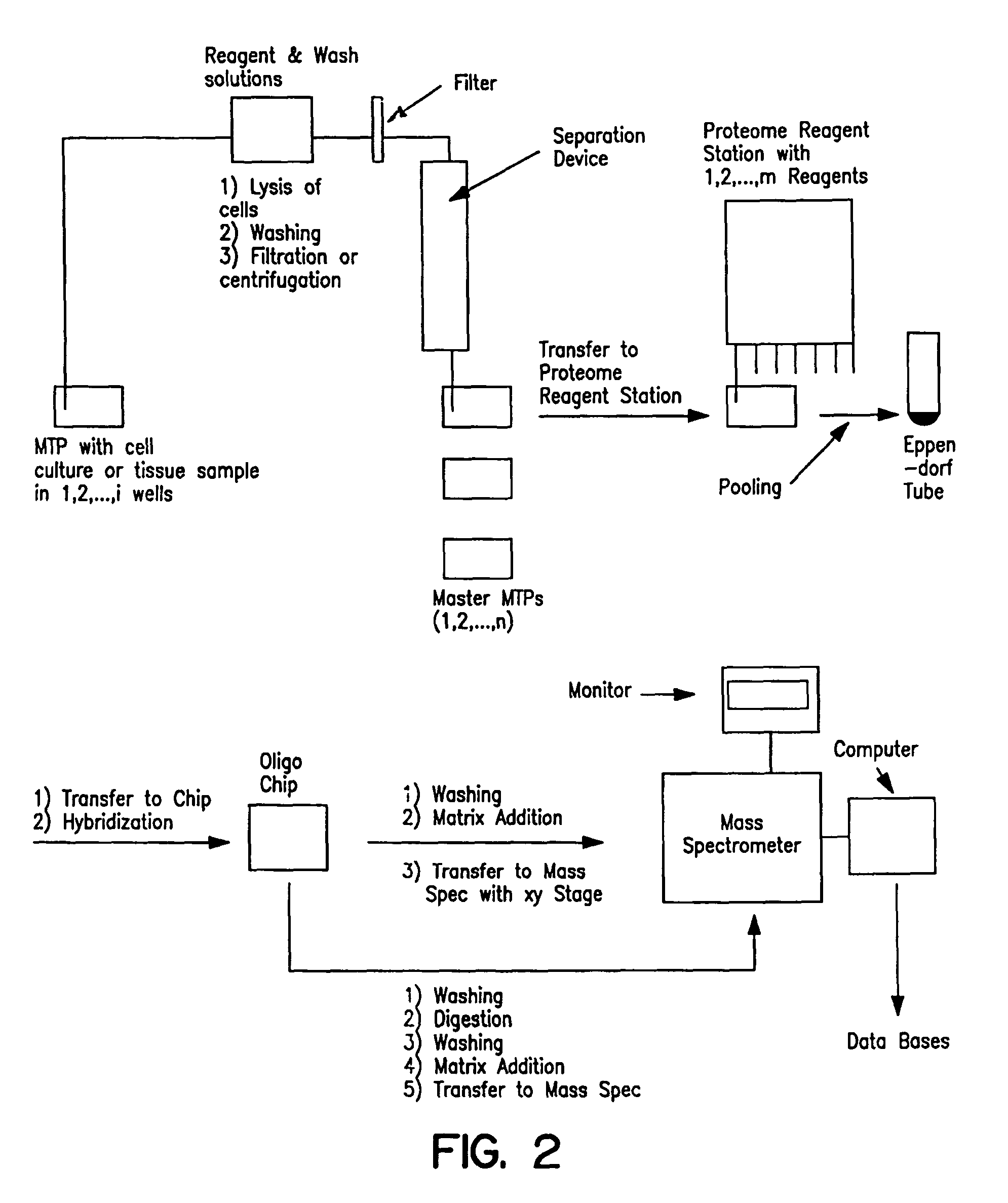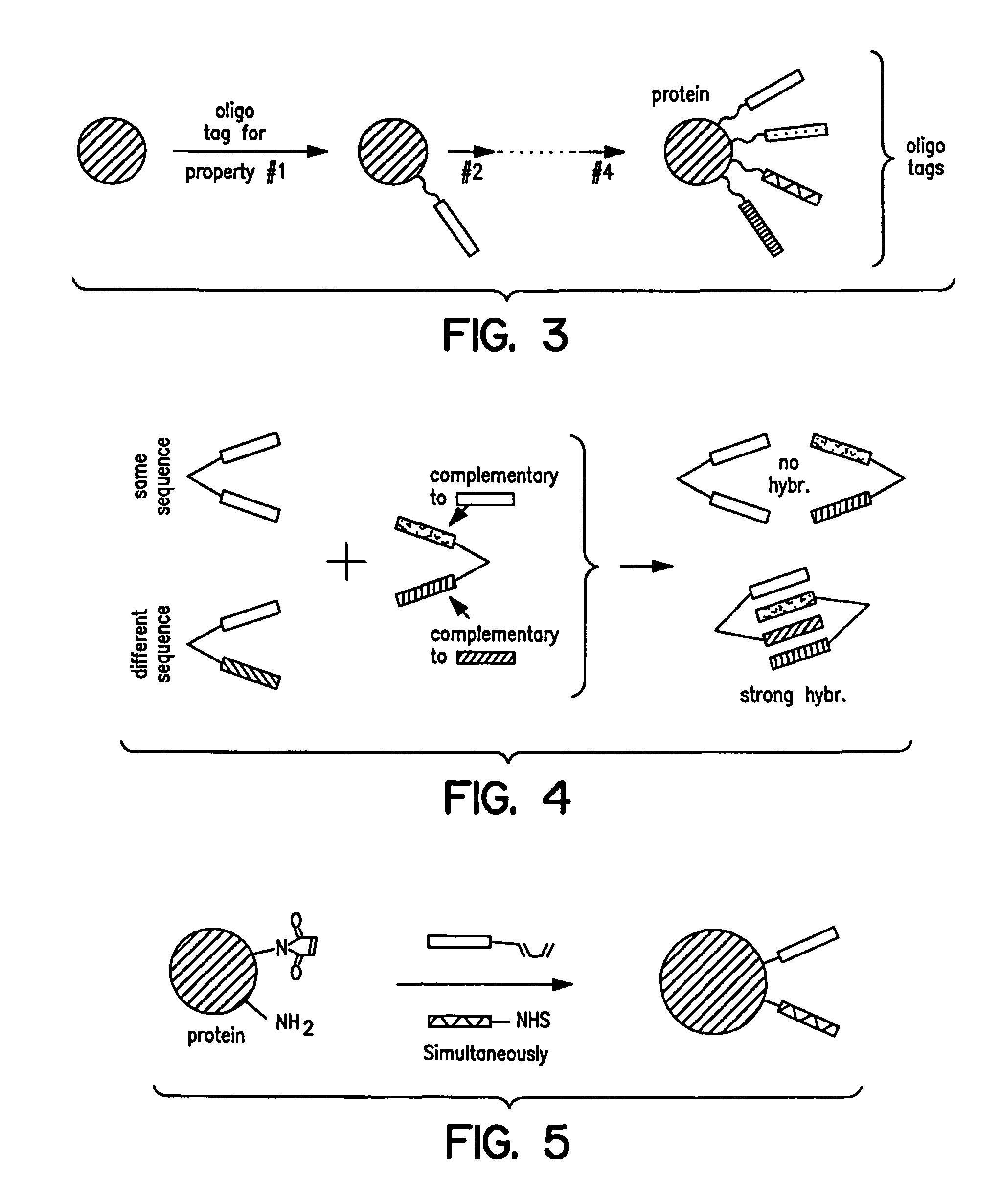Capture compounds, collections thereof and methods for analyzing the proteome and complex compositions
a technology of complex compositions and compounds, applied in the field of capture compounds, collections thereof, methods for analyzing the proteome and complex compositions, can solve the problem that the gene information may not be sufficient to stratify individual populations, and achieve the effect of high-efficiency therapeutics
- Summary
- Abstract
- Description
- Claims
- Application Information
AI Technical Summary
Benefits of technology
Problems solved by technology
Method used
Image
Examples
example 1
Examples for N1mBiN2n
[0484]a. N1 and N2 as Identical Tetramers, B as a Trimer
[0485]N1=N2, m=n=4, i=3, B=64 sequence permutations (SEQ ID. NO: 150)
[0486]
GTGC ATG GTGCAAGACGAGGTTGCTGGTG.........GGG
[0487]b. N1 and N2 as Non-Identical Tetramers, B as a Tetramer
[0488]N1≠N2, m=n=4, i=4, B=256 sequence permutations (SEQ ID. NO: 151)
[0489]
GTCC ATCG CTACAACGACCGAGCG............GGGG
[0490]c. N1 as a Heptamer, N2 as an Octamer, B as an Octamer
[0491]N1≠N2, m=7, n=8, i=8, B=65,536 sequence permutations. (SEQ ID. NO: 152).
[0492]
GCTGCCC ATTCGTAC GCCTGCCC N1 B N2
example 2
Separation of Proteins on a DNA Array
[0493]N1mBiN2n(S1)tM(R15)a(S2)bLXProtein where B is a trimer;[0494]m=n=4, i=3, t=b=1; underlined sequences are N1 and N2
[0495]
(SEQ ID NO: 153) / | CTGC ATG GTGC-S1-M(R15)a-S2-L-X-Protein 1 / |---CACG TAC CACG / | / | CTGC AAG GTGC-S1-M(R15)a-S2-L-X-Protein 2 / |---CACG TTC CACG / | / | CTGC ACG GTGC-S1-M(R15)a-S2-L-X-Protein 3 / |---CACG TGC CACG / | / | ... / | / | ... / | / | ... / | / | CTGC GGG GTGC-S1-M(R15)a-S2-L-X-Protein 64 / |---CACG CCC CACG (SEQ ID NO: 154)
example 3
I. Preparation of Protein Mixtures from Cells or Via Protein Translation of a cDNA Library Prepared from Cells or Tissues
[0496]The protein mixtures can be selectively divided on the physical or biochemical separation techniques
[0497]1. Preparation of Limited Complexity Protein Pools Using Cell Culture or Tissue
[0498]Proteins can be isolated from cell culture or tissues according to methods well known to those of skill in the art. The isolated proteins are purified using methods well known to those of skill in the art (e.g., TPAE, differential protein precipitation (precipitation by salts, pH, and ionic polymers), differential protein crystallization bulk fractionation, electrophoresis (PAGE, isoelectric focusing, capillary), and chromatography (immunoaffinity, HPLC, LC)). Individual column fractions containing protein mixtures of limited complexity are collected for use as antigen.
[0499]2. Preparation of Limited Complexity Protein Pools Using cDNA Expression Libraries (FIG. 6)
[0500]...
PUM
| Property | Measurement | Unit |
|---|---|---|
| Mass | aaaaa | aaaaa |
| Selectivity | aaaaa | aaaaa |
Abstract
Description
Claims
Application Information
 Login to View More
Login to View More - R&D
- Intellectual Property
- Life Sciences
- Materials
- Tech Scout
- Unparalleled Data Quality
- Higher Quality Content
- 60% Fewer Hallucinations
Browse by: Latest US Patents, China's latest patents, Technical Efficacy Thesaurus, Application Domain, Technology Topic, Popular Technical Reports.
© 2025 PatSnap. All rights reserved.Legal|Privacy policy|Modern Slavery Act Transparency Statement|Sitemap|About US| Contact US: help@patsnap.com



